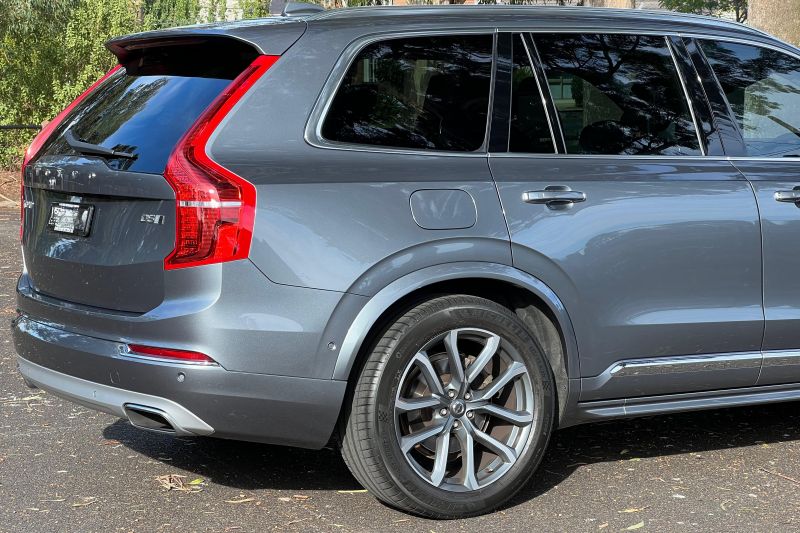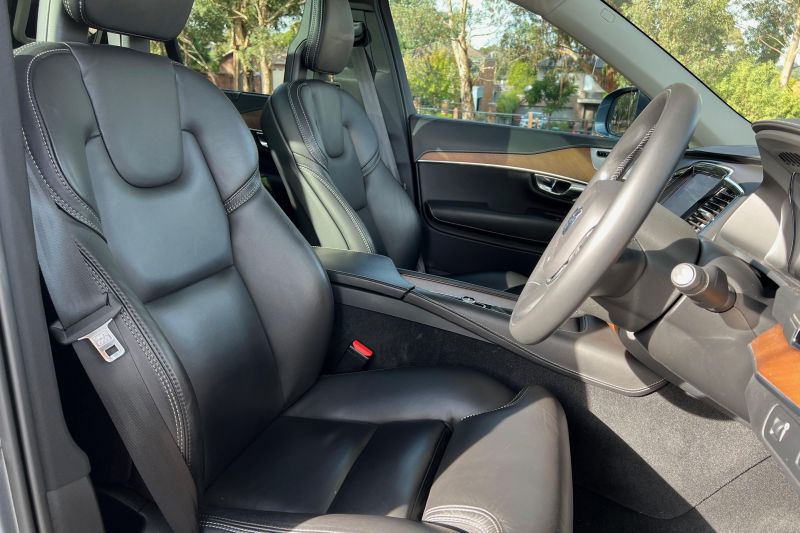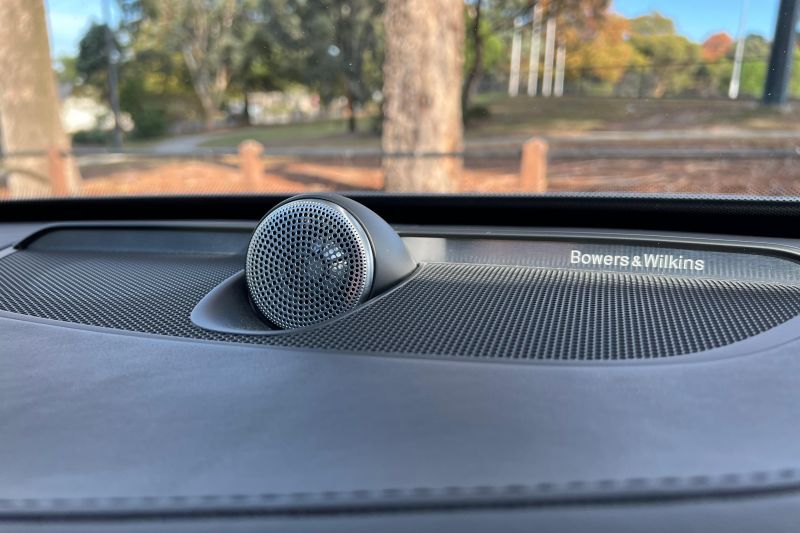About the Volvo XC90
A K purchased this Volvo XC90 new with additional options for $103,000 (including all on-road costs). A K would buy this car again because: “The XC90 is a practical, luxurious and comfortable family hauler with all the modern convenience and safety features, yet undercut the Germans in price. It has given us five years and 75,000km of essentially trouble-free motoring and the support from our local Volvo dealer has been fantastic.”
How reliable has your car been? Tell us about any issues.
When buying a $100k car, one would expect good reliability and the Volvo XC90 does not disappoint. Apart from routine yearly (or 15,000km) maintenance, and the first three were free-of-charge because we purchased under the corporate program, there has been minimal problem over the course of our ownership.
The only thing was a slight crack in the intercooler-to-turbo hose which the car’s computer detected and caused the car to go into “limp mode” (with a little turtle that showed up on the instrument cluster).
This was replaced under warranty and our dealer was able to source the parts and replaced in one day with a loan vehicle provided.
What do you think of the ownership experience with your car?
With three kids, the Volvo XC90 is the family workhorse – doing school drop-offs/pickups, peak hour commuting, weekend and holiday road trips, and everything in between – and the experience has been great.
Despite being a full-size seven-seat SUV, it’s actually quite easy to manoeuvre with light steering, good visibility, and a fantastic high resolution 360-deg view camera system.
On the open country road, it soaks up the miles in extreme comfort. The overall refinement and ambience of the cabin is top notch and Volvo probably makes some of the most comfortable seats in the industry.
The second row seats are wide enough to fit three child seats across without any problem and the middle seat features a built-in child booster that is quite easy to deploy and stow. The third row seats are comfortable enough for kids and pre-teens but disappointingly do not feature any child seat top tether anchors so younger kids cannot be accommodated there.
Volvo must think the third row is not as safe for little kids. Boot space is still reasonable at 397L with three rows in use and will fit a small pram, but becomes a cavernous 775L when the third row is folded down.
It comes with a luggage net that attaches from the back of the seats to the roof, and we’ve never had any problem fitting all our stuff for road trips including all the paraphernalia that goes with traveling with young children.
How has the purchase and aftercare experience been with your car?
We bought the car new from our local Volvo dealer. Instead of buying a stock vehicle, we custom ordered our car with the various options we wanted and the process was smooth.
Back in 2017, we even got a reasonable discount off the RRP. The wait for the vehicle was about four months which was reasonable for a custom order vehicle manufactured in Europe (Gothenburg in Sweden).
As mentioned, we qualify for the Corporate Program offered by Volvo which, among other things, got us free servicing for the first three years. The aftercare experience has generally been good. The only thing of note is the OE brake pads and discs tend to wear out quite quickly, and the replacement cost is quite substantial.
This seems to be a common trait for many owners and not just a result of my over-enthusiastic driving style (I’m a Volvo driver after all). Another thing is servicing costs (after the initial free period for us) can be relatively expensive, even compared to other European/German brands.
Are you happy with the price and features of your car?
Our vehicle is loaded with features. An equivalently equipped car from its German rivals will easily cost $10,000 to $20,000 more. For the MY17 model, all the safety features were made standard and this includes semi-autonomous cruise control and AEB that senses pedestrian, cyclist and large animals like moose and elks (but not kangaroos apparently because their movement is too erratic and unpredictable).
Also fitted standard are lane-departure warnings, blind spot monitoring and speed limit sign recognition. The latter, however, often fails to read our speed signs correctly, especially the variable LED type.
One of the best features we optioned is the 1500W 19-speaker Bowers and Wilkins sound system. This is likely the best factory fitted sound system this side of a Bentley Naim system. One can easily spent hours in this car, with its cabin trimmed in high-quality leather, open pore wood, and heated seats and steering wheel.
The panoramic sunroof also brings plenty of natural light into the minimalist Scandinavian interior.
What do you think of the performance and economy of your car?
Our car features the D5 engine, which is a twin-turbo 2.0-litre four-cylinder diesel. For the MY17 model, they added “Power Pulse” to the induction system. This uses compressed air to speed up the spooling of the turbo and reduce lag when the throttle is applied.
In real life, this tech does work. The turbo lag is discernibly less when compared to other diesel engine. Overall, power output is 173kW at 4000rpm and torque is 480Nm at 2250rpm. These numbers do not seem very potent, especially compared to rival six-cylinder units, but it is more than enough to haul this nearly two-tonne SUV along at respectable pace.
We haven’t done any towing but with five people and a full load of luggage, it is still swift enough and the low-end torque of the turbo diesel means effortless touring and overtaking on the open road. Compared to diesel engines from other manufactures, the Volvo engine is a bit louder and more “industrial” at low revs and when pulling off from standstill. This unfortunately detract from its otherwise excellent refinement.
Fuel economy around town is about 9.0-10L/100km and this drops to 6.0-7.0L/100km on country highways. With a circa-70L fuel tank, a 800-900km range is achievable out on the open country roads.
Interestingly, despite Volvo’s claim of better fuel economy with downsizing all their engines to 2.0L/4-cylinder or less, the fuel economy in the real-world is no better than a 2012 VW Touareg 3.0L V6 diesel that I owned prior to the Volvo.
What do you think of the technology in your car?
The Volvo XC90 has all the expected technology for circa-$100k modern SUV and in general they all work together quite well. Unlike many other manufacturers, the Volvo central infotainment screen is portrait orientated.
It works well with its native navigation, entertainment and phone functions. However, when using smartphone mirroring such as CarPlay, only half the screen is utilised with the actual functional area being quite small.
Many other functions (such as air conditioning) are also controlled via this touch screen to minimise the number of physical buttons. While many motor journalists hate this trend in modern cars, I’ve gotten quite used to it after owning this car for a while and in general it’s not a significant problem.
The instrument cluster is also fully digital but customisation and the graphics are not as good as some of its German rivals. Likewise the head-up-display; it’s functional but it’s not as crisp and bright as the rivals.
From my experience of owning and having owned cars from other manufacturers, VAG (Audi/Volkswagen) makes better digital instrument clusters and BMW makes better head-up displays.
Volvo also hasn’t introduced its “connected-car” services – Volvo On Call – in Australia. This is something that is now common in most luxury brands and also filtering into mainstream brands such as Hyundai and Toyota. In my other vehicle, I can check remotely the locking status, the location, fuel tank level etc via a smartphone app and also send destination input to the satellite navigation before getting into the car. I wish the Volvo had this feature.
What do you think of the ride comfort and handling of your car?
Our XC90 is specified with the optional air suspension. This allows for a more compliant ride, self-levelling and variable ride-height control (with an off-road mode that increases ground clearance to 267mm).
No one will do any serious off-roading in a XC90 but the increased clearance between the tyres and the wheel arches was handy when fitting snow chains. When “Sport Mode” is selected, the suspension will stiffen the damper and lower a couple of centimetres to improve handling.
Even in this mode, it is still a two-tonne SUV and not a sports car. The handling is safe and secure but certainly not agile.
Most of the time, it is just left in the default “Comfort”. When in this mode, the ride is generally comfortable enough.
Repeated large and low-frequency undulations (found commonly in country B-roads) will get the car a bit floaty and nauseating for the passengers. This is when “Sport Mode” should be engaged but some ride comfort will be sacrificed.


